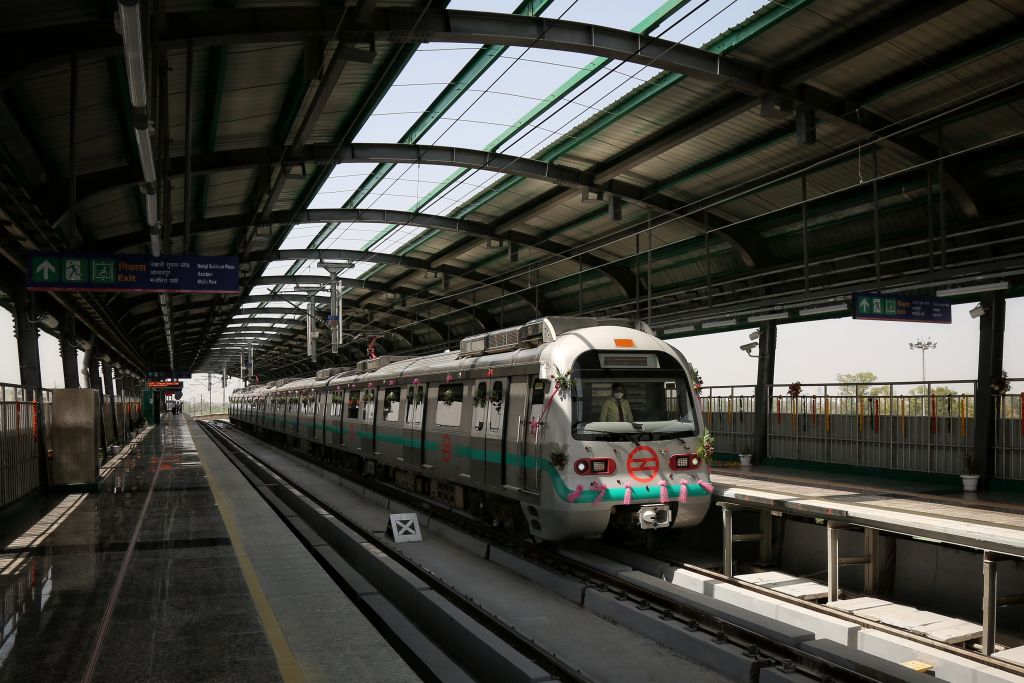Over the years, India’s metro rail network has flourished rapidly, facilitating lakhs of commuters daily. With newer metro lines in various cities, the service has become a new lifeline for the cities in modern India.
From the first tracks laid in Delhi’s expanding suburbs in the early 2000s to the bustling, tech-powered networks now weaving over 20 Indian cities, India’s metro story is a symbol of its urban awakening.
What began as a cautious step into mass rapid transit has evolved into a nationwide movement, streamlining daily commutes, reducing city congestion, and reshaping skylines. The metro is no longer just a mode of transport; it’s a lifeline pulsing through the heart of India’s growth story, driven by ambition, innovation, and a vision of sustainable urban living. India now proudly stands as the world’s third-largest metro network, reflecting its rapid strides in urban transit expansion.
How Indian metro grown over the years?
India’s operational metro network has soared from 248 km across 5 cities (in 2014) to 1,013 km across 23 cities by May 2025, adding 763 km in just 11 years.
Average daily ridership has climbed from 28 lakh (2013–14) to over 1.12 crore, marking a transformative shift in urban commuting.
The pace of commissioning new lines has accelerated ninefold: from 0.68 km/month (pre‑2014) to approximately 6 km/month today.
The annual metro budget for 2025–26 is ₹34,807 crore, up more than six times from ₹5,798 crore in 2013–14.
Steering the Future: Key Steps by the Government
To accelerate urban mobility and ensure sustainable transit solutions, several transformative initiatives have been launched. These steps aim to ensure that metro projects are sustainable, economically viable, and technologically advanced.
Metro Rail Policy, 2017: It mandates cities to prepare Comprehensive Mobility Plans (CMPs) and establish Urban Metropolitan Transport Authorities (UMTAs) to guide the development of metro systems with a strong emphasis on sustainability, economic viability, and integrated urban mobility.
Make in India for Metro Rail Systems: As part of the Make-in-India drive, the government has made provisions for domestic procurements of at least 75% of metro cars and 25% of key equipment and sub-systems—a bold step to boost local production and foster self-reliance in the mobility sector. In the last ten years, India has invested nearly ₹2.5 lakh crore (US$28.86 billion) into expanding its metro network.
Global Partnerships: Global Partnerships are also steering the growth of the Metro Network in the country. One such project, the Mumbai Metro Line 3 (MML-3), is expected to transform urban transit with a massive investment of ₹23,136 crore (US$2.67 billion).
Green Urban Mobility: India’s metro rail systems are embracing green innovations. The Delhi Metro installed a vertical bi-facial solar plant on an elevated viaduct at Okhla Vihar and a 1 MW rooftop solar plant at Khyber Pass depot, pioneering land-free renewable energy use. Other green initiatives like regenerative braking systems, widely adopted across metros, help save power and reduce carbon emissions by converting braking energy into electricity.
Some major feats of metro rail
India’s metro systems aren’t just expanding in size, they’re evolving in intelligence. With a strong push toward automation, digitalisation, and sustainability, metros across the country are embracing new technologies.
Underwater Metro
In 2024, India achieved a major milestone by launching its first underwater metro tunnel in Kolkata, connecting the Esplanade to Howrah Maidan beneath the Hooghly River.
This engineering marvel stands as a symbol of India’s growing technological and infrastructural prowess.
Water Metro
Kerala’s Kochi became India’s first city to launch a Water Metro that connects 10 islands using electric-hybrid boats for seamless and eco-friendly transport.
Unified One Nation, One Card solution
Enables seamless travel across metros, buses, suburban rail, tolls, and retail. QR-Based Ticketing. Mobile app-based QR tickets simplify and digitise the ticketing experience.
Unmanned Train Operations (UTO)
Driverless tech is functional across multiple stretches of the Delhi Metro, the first of them being introduced on the Magenta Line in 2020. It improves efficiency and lowers human dependency.
Indigenous Automatic Train Supervision System (i-ATS)
Developed locally for the first time in India, ATS provides automatic local and central control and monitoring of train operations and signalling. Jointly created by the Delhi Metro Rail Corporation (DMRC) and BEL, now active on the Red Line of the Delhi Metro.
From the buzzing platforms of Delhi to the rising lines of Surat and Bhopal, Metros are silently stitching together the fabric of a new India: fast, efficient, and clean. These aren’t just trains; they’re lifelines of tomorrow’s India, delivering not just passengers, but ambition, equity, and resilience. As India aspires to become the world’s third-largest economy with a projected GDP of $7.3 trillion by 2030, robust public transportation like Metro rail will be the backbone of its growth, connecting people, powering cities, and protecting the planet. With the government’s continued focus and execution, India is well on track to become one of the world’s leading models of Metro-led mobility transformation.














